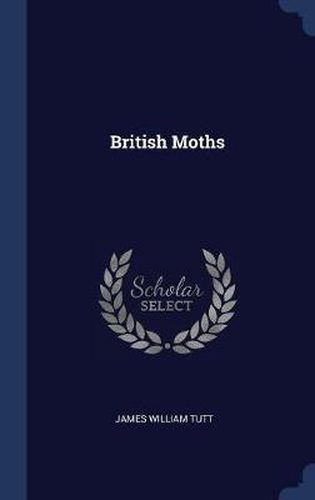Readings Newsletter
Become a Readings Member to make your shopping experience even easier.
Sign in or sign up for free!
You’re not far away from qualifying for FREE standard shipping within Australia
You’ve qualified for FREE standard shipping within Australia
The cart is loading…






This historic book may have numerous typos and missing text. Purchasers can download a free scanned copy of the original book (without typos) from the publisher. Not indexed. Not illustrated. 1896 Excerpt: …Its pretty green or brown larvae with oblique stripes are abundant in gardens on shrubs. The White Colon (M. albicolon) is fond of coast districts, especially sandhill where it is sometimes abundant at sugar in June. It has a row of yellowish dots in place of a subterminal line, and two white dots (: a colon) in the reniform. The Large Nutmeg (M, sordida) is a common species of ochreous tint mottled with pale brownish. The Crescent-striped (M. abjecta) is very local but widely distributed, in some years it is taken in all kinds of strange places. It is usually a coast species. The marshes below Gravesend and St. Anne’s-on-Sea are well-known localities. Fig. 28. The Cabbage Moth (If. brassicas). The Green Arches (Aplecta prasina).–The five British species of Aplecta are all large moths. Liko Mamestra they have strongly-marked W lines. The Green Arches is known at once by its deep rich green tint; the Grey Arches (A. nebulosa) by its pale-grey or white tint; the Silvery Arches (A. tincta) by it3 shiny silvery colour; and the Palb Shining Brown (A. advena) by its brown tint with a silvery or shining gloss. A race of A. nebulosa has been bred by the Warrington collectors which is absolutely black. The grey type is most abundant on tree trunks in woods, and it comes very freely to sugar in June. A. advena abounds at sugar in June and early July at Wicken and other places. The lame of A. iincla are obtained in some numbers on birch trees in March and April; they feed by night. The largest species of all, the Geeat Brocade (A. occulta), is very capricious in its appearance. The Scotch specimens are much blacker than the English. The Exile (Crymodes exulis) abounds in some years in Shetland, whilst a small black form, known as var. assimilis, is taken in Eannoch. …
$9.00 standard shipping within Australia
FREE standard shipping within Australia for orders over $100.00
Express & International shipping calculated at checkout
This historic book may have numerous typos and missing text. Purchasers can download a free scanned copy of the original book (without typos) from the publisher. Not indexed. Not illustrated. 1896 Excerpt: …Its pretty green or brown larvae with oblique stripes are abundant in gardens on shrubs. The White Colon (M. albicolon) is fond of coast districts, especially sandhill where it is sometimes abundant at sugar in June. It has a row of yellowish dots in place of a subterminal line, and two white dots (: a colon) in the reniform. The Large Nutmeg (M, sordida) is a common species of ochreous tint mottled with pale brownish. The Crescent-striped (M. abjecta) is very local but widely distributed, in some years it is taken in all kinds of strange places. It is usually a coast species. The marshes below Gravesend and St. Anne’s-on-Sea are well-known localities. Fig. 28. The Cabbage Moth (If. brassicas). The Green Arches (Aplecta prasina).–The five British species of Aplecta are all large moths. Liko Mamestra they have strongly-marked W lines. The Green Arches is known at once by its deep rich green tint; the Grey Arches (A. nebulosa) by its pale-grey or white tint; the Silvery Arches (A. tincta) by it3 shiny silvery colour; and the Palb Shining Brown (A. advena) by its brown tint with a silvery or shining gloss. A race of A. nebulosa has been bred by the Warrington collectors which is absolutely black. The grey type is most abundant on tree trunks in woods, and it comes very freely to sugar in June. A. advena abounds at sugar in June and early July at Wicken and other places. The lame of A. iincla are obtained in some numbers on birch trees in March and April; they feed by night. The largest species of all, the Geeat Brocade (A. occulta), is very capricious in its appearance. The Scotch specimens are much blacker than the English. The Exile (Crymodes exulis) abounds in some years in Shetland, whilst a small black form, known as var. assimilis, is taken in Eannoch. …